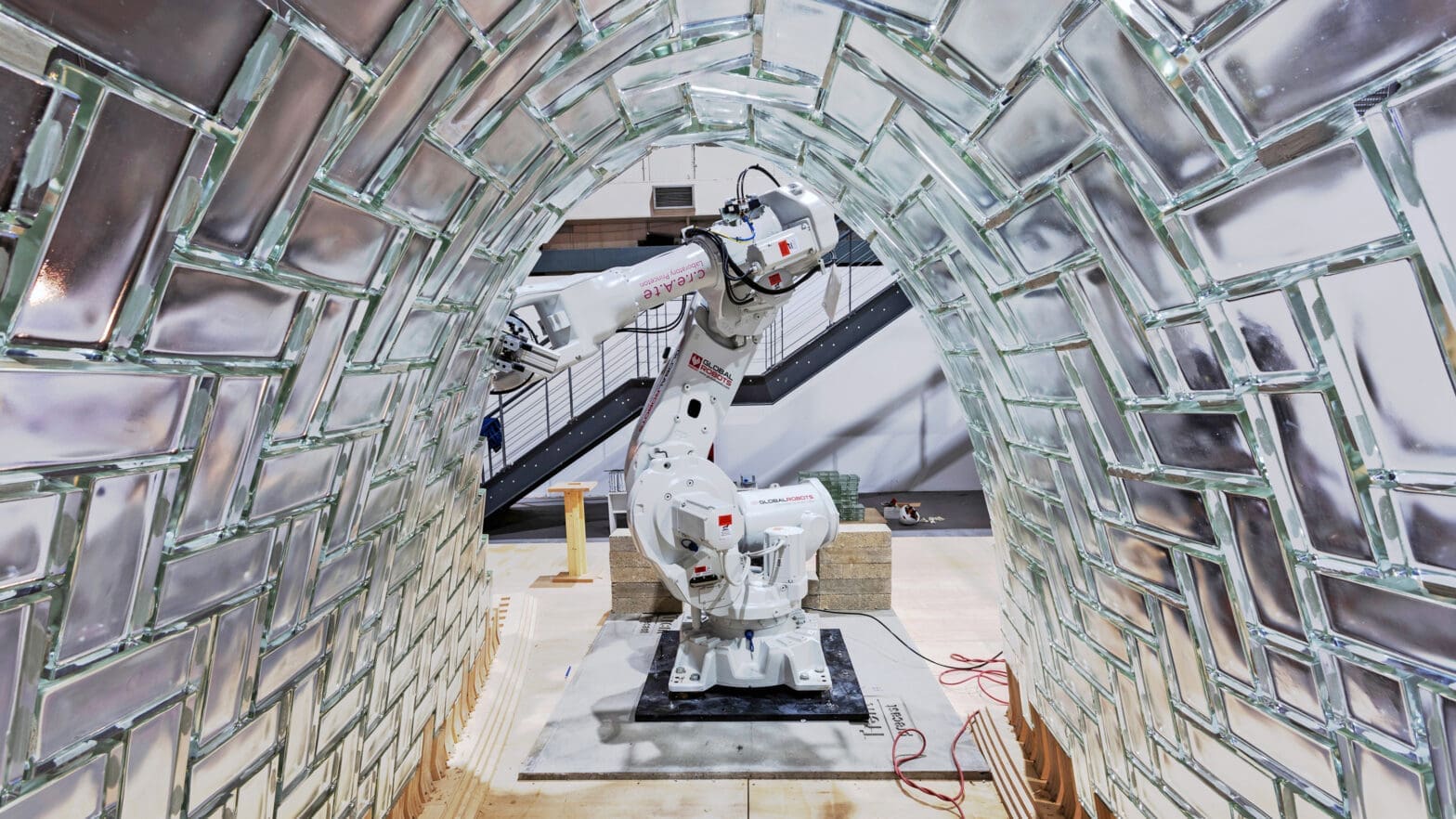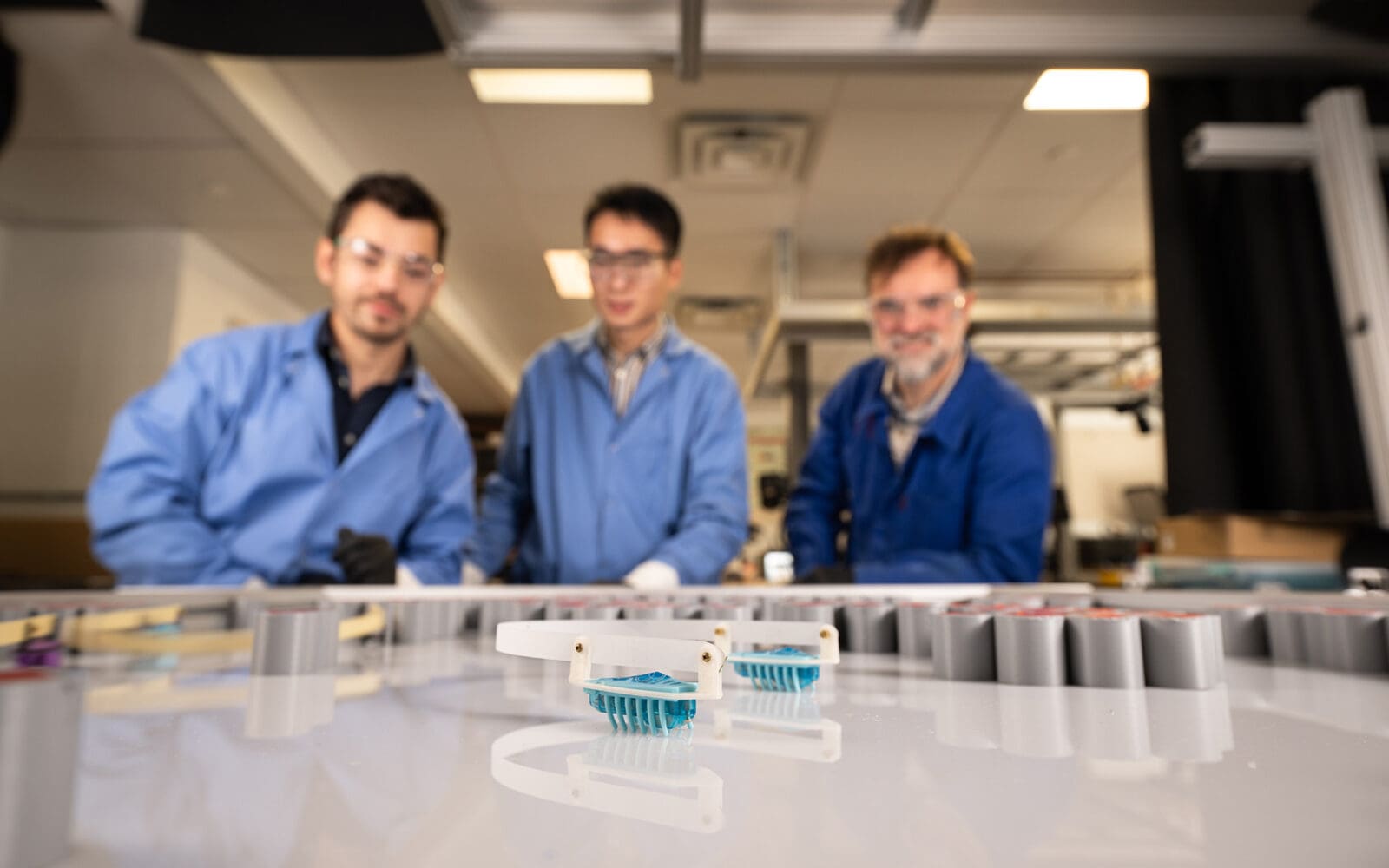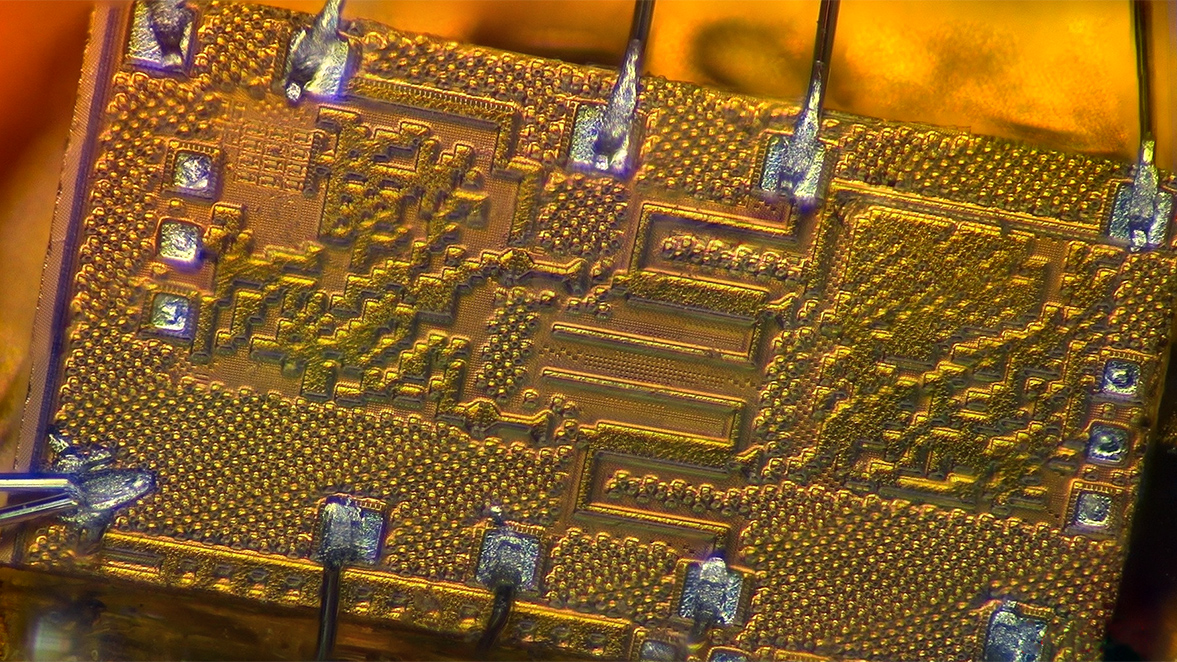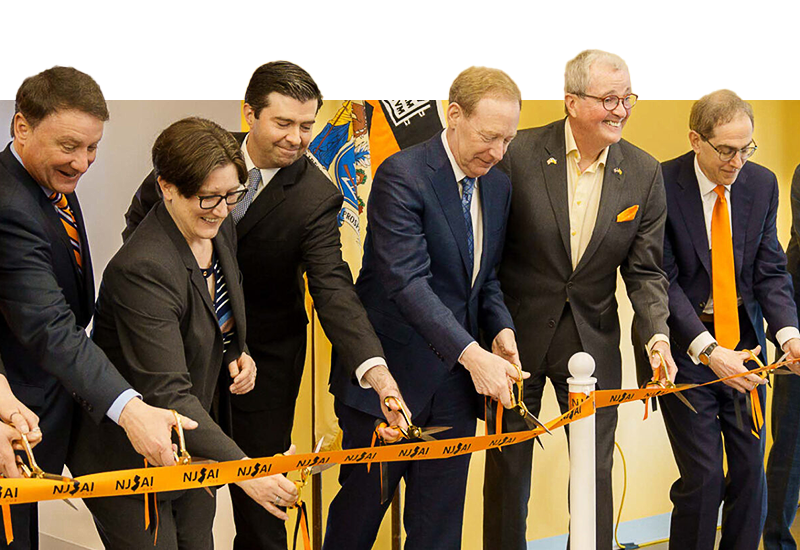
Building bots could brave harsh environments, create new types of structures
By
on
This article is from the Robotics: Safe, resilient, scalable, and in service of humanity issue of Equad News magazine.
“There are many things that are extremely difficult for a human to build,” said Sigrid Adriaenssens, an associate professor of civil and environmental engineering. “There are also environments that are difficult or hazardous for humans.”
Adriaenssens leads the Form Finding Lab and specializes in structures and designs that involve minimal, self-adapting, and flexible materials. Recently, she has been collaborating with colleagues across an array of disciplines to identify how robots could improve building techniques and, in some cases, allow for construction that is impossible with current methods. In 2020, she co-led an effort with Stefana Parascho, an assistant professor of architecture, to demonstrate ways that robots could help reimagine the way that architects and engineers think about building. Joining with the international engineering and design firm Skidmore, Owings, and Merrill, the team used two repurposed automotive assembly robots to build a vault of 338 transparent glass bricks for the “Anatomy of Structure” exhibition in London.
The twin robots were able to build the 7-foot-tall vault without the need for scaffolding, which reduced the amount of material required. Because the machines could place the bricks with far more precision and regularity than any human, they were able to work more efficiently.
“My work is not trying to replace human labor by automating it, but to increase the possibilities for architecture by using robots for tasks that humans are rather bad at,” Parascho said at the time.
Adriaenssens said realizing the full potential of robotics in construction will require engineers and architects to work closely with colleagues who specialize in software and robotics.
“The goal is to make the robot so smart that when we give it certain criteria, the robot has enough information and knowledge about the mechanics of structures that it can design and create structures without specific instructions,” she said. “The ultimate dream is you put a robot on Mars or in Antarctica, and it would start building by itself.”







